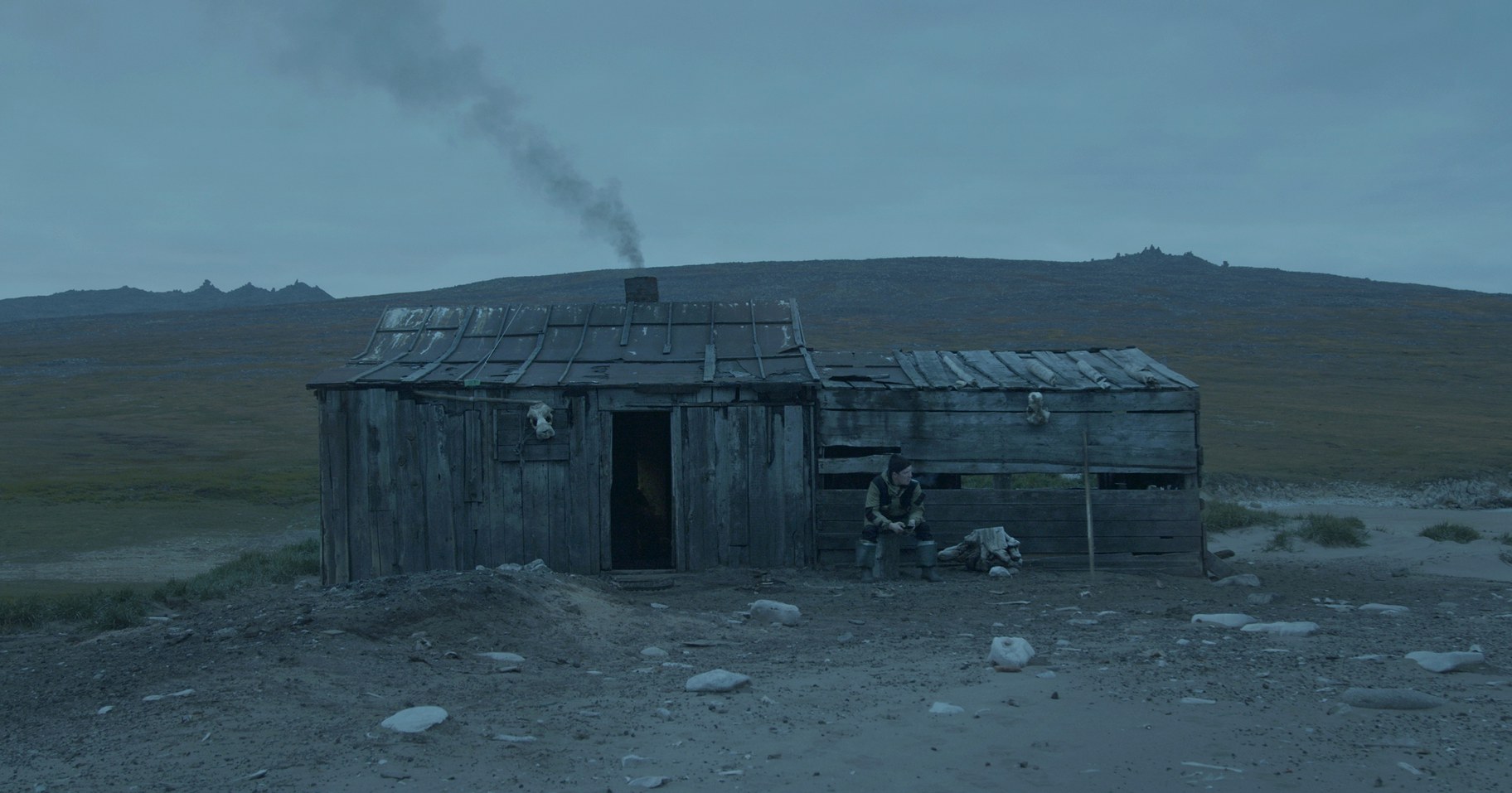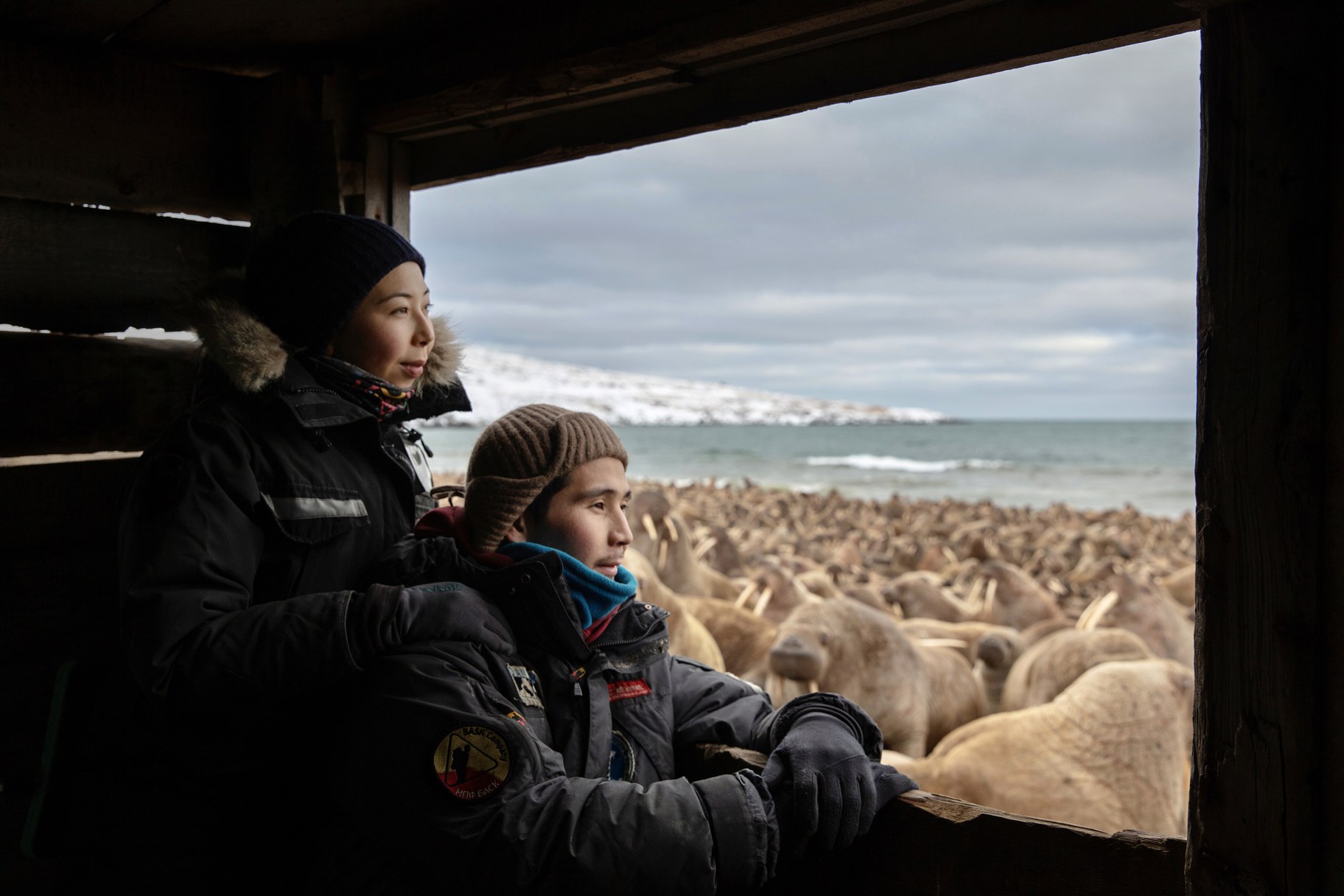Every fall, scientist Maxim Chakilev goes to a remote beach in the Siberian Arctic to document one of the largest walrus populations in the world. Recently, more than 100,000 walruses have hauled themselves onto land and surrounded his small wooden hut. The animals used to live mostly on the ice off the coast, but rising temperatures have forced them out of the water, leading to a harrowing fight for survival. This is the focus of the short documentary “Haulout,” a contender for Best Documentary Short Film at this year’s Academy Awards.
“He comes there in the end of August, and he stays for three and a half months in this hut, all alone. And he tries to count the walruses, the amount of them …when they come in, when they leave the place. The gender also. How many walruses die every year, which sadly … every year the number is increasing,” says director Evgenia Arbugaeva. “And so he does this invisible work of scientists on the ground, collecting data. And from this data, we understand the population of animals, their migration, and how they're impacted by climate change.”

“He comes there in the end of August, and he stays for three and a half months in this hut. … He does this invisible work of scientists on the ground, collecting data,” says showrunner Evgenia Arbugaeva. Credit: Evgenia Arbugaeva / The New Yorker Studios.
She explains that walruses traditionally rest on floating ice, but because there’s no ice in the ocean in summer now, they go to the land to rest and eat during their migration.
“It is really challenging for them. And because the gathering is so massive, they are prone to stampedes and trampling, especially weaker animals and cubs.”
Arbugaeva says about 600 walruses die on this beach every year. She adds that she often cried when filming. “And my hands were shaking, and especially in this scene because it's just so hard to watch. … These are wild animals, and there's so many of them that one human cannot do anything.”

Evgenia Arbugaeva and Maxim Chakilev look out at walruses from a hut in the Siberian Arctic. Credit: Evgenia Arbugaeva / The New Yorker Studios.
